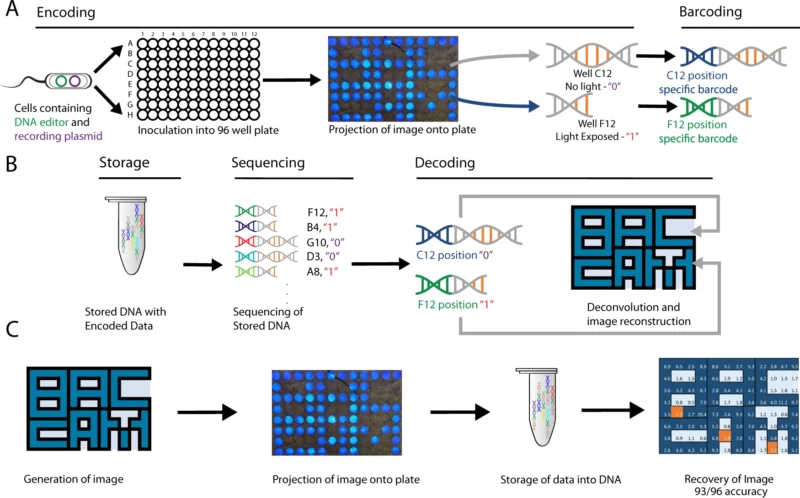Researchers Have Created a Biological Camera That Stores Images onto DNA
![]()
In an attempt to experiment with the idea of using biological materials to store digital data, researchers have created a method where they were able to capture light patterns — photos — and store them onto DNA.
In a research paper published on Nature, the researchers say that there is a desire to increase the integration between biological and digital interfaces, specifically the desire to store digital data. The goal of storing data within defined sequences of DNA is the most promising of these concepts.
Of these, the one with the highest potential is storing information on specific sequences produced by de novo DNA synthesis, or the synthetic creation of DNA rather than assembly or modification of natural precursor template DNA sequences. The issue is that doing this has often been incredibly expensive and not particularly effective, until now.
As explained by News Medical, the researchers have created a method that enables the direct capture of spatial data and signal input by passing 2D light inside DNA, allowing them to store images.

“We detail a method of capturing 2-dimensional light patterns into DNA, by utilizing optogenetic circuits to record light exposure into DNA, encoding spatial locations with barcoding, and retrieving stored images via high-throughput next-generation sequencing,” the researchers explain in their paper’s abstract.
“We demonstrate the encoding of multiple images into DNA, totaling 1,152 bits, selective image retrieval, as well as robustness to drying, heat and UV. We also demonstrate successful multiplexing using multiple wavelengths of light, capturing 2 different images simultaneously using red and blue light. This work thus establishes a ‘living digital camera’, paving the way towards integrating biological systems with digital devices.”
In the paper, the researchers say they were able to not only record the images onto DNA, but successfully retrieve the data. The team was able to show that various wavelengths of light were successfully multiplexed (wavelength division) to capture two different images concurrently using blue and red light.
Basically, the researchers were able to prove that they could basically create a biological camera, which has ramifications for the successful integration of digital devices and biological systems together in the future.
Image credits: Header photo licensed via Depositphotos.